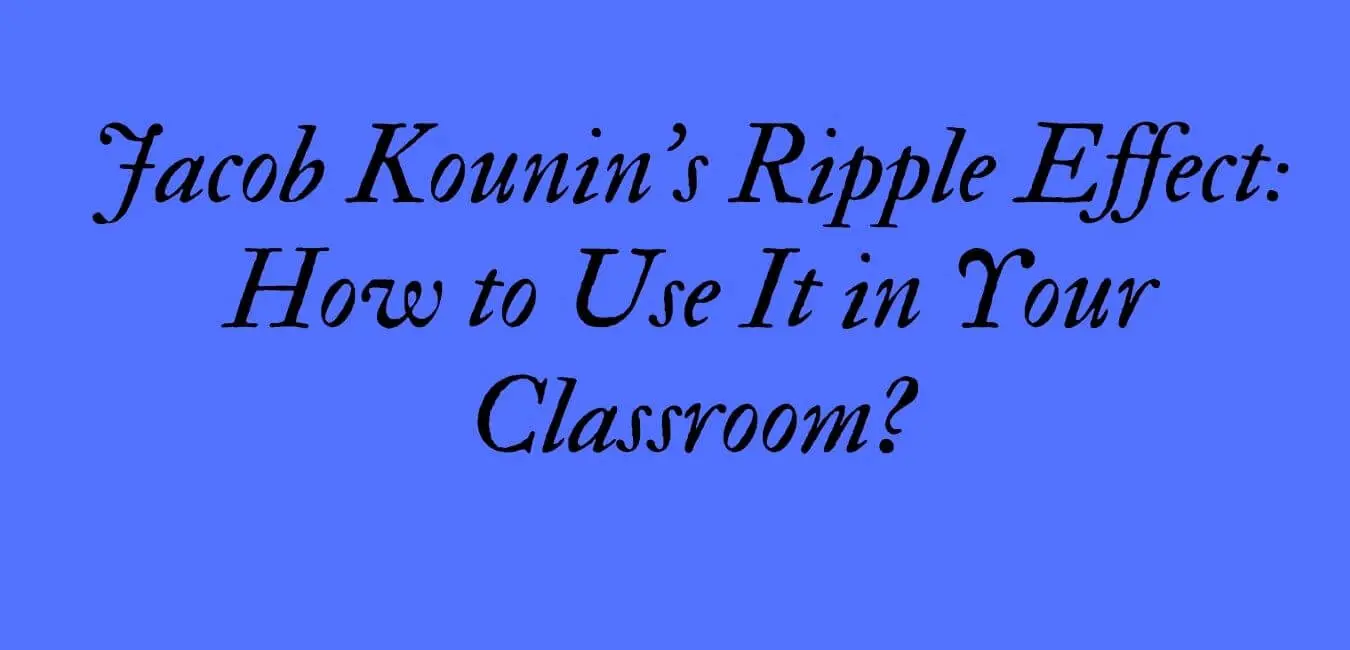Have you been struggling to manage your classroom effectively? Have you found yourself in a situation where getting a clear guide to managing your students’ behavior is difficult?
If these questions describe your condition as of now, then you have to stick around with me for an analysis of one of the models of classroom management.
This “tried, tested, and true” model will guide you in your classroom if its principles are in line with your philosophy of education. In this article, I am going to discuss with you one of those models. This is shown below;
James Dobson proposed a model on classroom management/discipline and called it “A Place for Punishment.” This model advocates for the use of corporal punishment in schools as a means of controlling the behavior of students. For example, he believes spanking, smacking, and pinching can be used in disciplining a kid/student.
Background of Model
Supplying punishment in the classroom has been a subject of the literature for a very long time. Some people abhor it while others still worship it as the last resort for teachers.
However, most of the evidence in the literature suggests that corporal punishment should be minimized or stopped in schools. Unfortunately, corporal or non-physical punishment has not been significantly minimized or even stopped in schools.
But what is the definition of corporal punishment? The Texas Education Code (2013) defines corporal punishment as “… the deliberate infliction of physical pain by hitting, paddling, spanking, slapping, or any other physical force used as a means of discipline.”
From this, it follows that corporal punishment is the means of correcting and controlling a child’s behavior through the use of physical force intended to create pain but not injury.
Dr. Dobson believes that supplying a punishing punishment is what will stop children/students from misbehaving in the classroom. He argued that pain is a marvelous purifier. Other behaviorists claim that punishment should trigger an unpleasant stimulus in the person receiving it such that a change in behavior will be induced.
Also, Dobson suggested that students (irrespective of their levels) prefer, respect, and even love more strict teachers. This is because of the following;
1. If there is no adult control, the bullies take control of the classroom. Now the less able/strong suffer. Because of this, students like a teacher who is strong and can control the class.
2. Students love to be treated justly and equally. Therefore they like teachers who can implement and enforce an equitable system of rules.
3. Classrooms that are not disciplined tend to be chaotic. With this, the classroom environment will be tiring/irritating.
In advising parents and teachers, Dobson recommends that they should not use their hands to punish their children/students. He posited that the hand should be used and perceived as an object of love by students instead of being an instrument of punishment. He, therefore, recommended the use of a switch, a belt, or a paddle in carrying it out.
Dobson says that parents and/or teachers should start punishing young children/students before it is too late. Hmmm, he sees spanking as the greatest insult for teenagers and that they detest it.
Corporal punishment should always be a consequence of a behavior infraction. When the child/student intentionally breaks the rules, spanking should be administered immediately.
Arguments in Favor of this Model
But why do behaviorists like Dobson propose this model? Why not recommend an alternative model of controlling student misbehavior? Let’s look at what proponents of this model often cite to defend their position in the discussion below;
1. They believe punishment is deeply rooted in the Bible.
This has been the inspiration for the philosophy of those who support the use of corporal punishment in correcting student/child behavior. For example, “He who spares the rod hates his son, but he who loves him is diligent to discipline him” (Prov. 13:24).
This verse is often used to support Dobson’s view on administering corporal punishment in both schools and at home. Therefore, he declared that some strong-willed children/students need to be spanked in order that their needs will be met.
2. In addressing the criticisms of people who claim that there is no scientific proof of the effectiveness of corporal punishment in school.
Dobson argues that principles of discipline cannot be driven by scientific inquiries. He states that they are very complicated as there are many variables that affect discipline. Thus, he believes that alternative models and philosophies of discipline are contrary to the very complex nature of children.
He finally suggests that parents and teachers must understand the physical and emotional features in child development and then adjust their discipline methods to the needs of the individual child. But how do parents/teachers do that? Much is yet to be known about that.
3. Dobson believes that parents and teachers should work to control children’s/students’ choices.
According to him, students who have strong will need strong parents and teachers to control and shape their behavior at home and in school. In essence, he is advising teachers to be strong in order to be able to direct the behavior of students in their classrooms.
4. Finally, Dobson and his colleagues argue that discipline should be one of the most important things in the early stages of a child’s development.
Based on this, they believe that the child should have an authority that he/she respects and obeys both in school and at home. Administering corporal punishment is a key element in ensuring discipline at the early stages of a child’s life.
Dobson (1992) claims that there are two types of teachers on the first day of the students. And that these teachers convey different messages like below:
1. The first type of teacher says, “We are going to have a fun year; you are going to love me and your school”
2. The second type of teacher speaks like this, “This is going to be a good year. Your parents have given me the responsibility of teaching you some very important things this year. This is why I cannot let one or two show-offs keep me from doing my job. Now if you want to try and disrupt what we’re here to do, I can tell you it will be a miserable year for you. I have many ways to make you uncomfortable and I will not hesitate to use them.”
From the above, Dobson argues that the second type of teacher will face no problem in his/her class whereas the first type of teacher will lose control, and student misbehaviors will increase drastically and in density. In a nutshell, democracy has no place in Dodson’s model of classroom management or discipline.
Examples of Corporal Punishment
What are some of the punishments considered corporal? Corporal punishment is made up of so many physical treatments that are still used in the United States and across the world. Below are some of them:
- Paddling
- Spanking the tongue
- Making students stand motionless for long periods of time.
Where does the model fit in?
This model found its backing from the interventionist philosophy of managing student behavior as put forward by Wolfgang and Glickman. With this, a proponent of this model believes that the teacher has to intervene to create an environment capable of propelling effective learning. Thus, the teacher should put in place conditions such as punishment to get students to behave appropriately.
The model also can be supported by the philosophies of French and Raven about the social bases of power. This model is strongly founded in the use of Coercive power to help the teacher in promoting appropriate behavior in the classroom.
The Skinnerian behaviorist philosophy could be aligned with this model too. Only that Skinner believed human behavior can be manipulated effectively through rewards instead of punishments. His idea is founded on the results of his study in 1952, which found that punishments were ineffective in conditioning human behavior.
It can also be said that; this model is in congruence with the “control” category of Lewis’s Keep It Simple philosophy. Thus, the teacher has the authority to dominate and control the students in the classroom. This means students have less say in manning the activities within the classroom, leaving the teacher at the forefront of everything.
Dobson’s Model vs Democracy
To do a good job, we have to analyze the model to see whether it supports democracy in the classroom. First, what does the model say about power, authority, and control? According to Dobson, God and society have placed the teacher in a position of authority and power in the classroom.
With this, the most important thing is the teacher should use this authority and power to maintain and uphold standards of good behavior that are conducive enough to support effective teaching and learning in the classroom. Through this, the teacher can have control over the behavior of his/her students.
Even though there might be some struggle for power and authority between the teacher and the students the teacher must be the winner according to Dobson’s thought. When students intentionally break any of the established standards of behavior in the class, the teacher should met-out punishment immediately, decisively, and confidently. Here the thinking is that if the teacher loses the power struggle, the students will not pay allegiance, respect, and obey the teacher.
From the above, the principles of democracy will be trampled on. Thus, there will not be true democracy as students’ freedom, choice, self-determination, the pursuit of happiness, rights and responsibilities, tolerance, liberty, etc. might be curtailed.
When this happens in your classroom, then your classroom environment will not be democratic enough to propel effective teaching and learning. Especially if there is no degree of freedom and choice in your classroom, the entire atmosphere of the class will be affected negatively.
Lastly, how does the “A Place for Punishment” model perceive rules and consequences in the classroom? Answering this question puts more light on our analysis. This model suggests that there should be clear and unambiguous rules and regulations in the classroom. And that the consequences for intentionally breaking these rules and regulations should be immediate and consistent. This means a lot, and a typical Dodson’s classroom cannot be democratic.
In summary, the principles of this model don’t support the development of classroom democracy. That is student freedom and choice are considered, under this model, to be challenging the authority of teachers and promoting rebellion. With this, democracy is not possible in Dobson’s classroom.
Public Opinion on the Use of Punishment
The public is divided in their thoughts about the use of punishments in schools. This division, I think, is based on legal, cultural, and religious lines. Below is my discussion of how it is so;
1. Societies or countries whose constitutions give more rights to children tend to call for the stoppage of corporal punishments in schools. Thus, if more fundamental rights are bestowed on children, for example, the right to freedom and choice, it will be challenging to administer corporal punishment in schools. With this, citizens of these countries will abhor it. This is the reverse in societies where their constitutions don’t grant more fundamental rights to their children.
2. Cultures that consider parents and teachers to be the helm of authority will likely favor the use of physical punishments and that nothing wrong will be seen about it. But those cultures that see the child as having equal rights as any other adult are mostly those calling for the abolishment of punishments in school.
3. Those who are fundamentalists like Dobson see corporal punishment as a God-sent solution to children’s misbehavior. By this, they advocate for the use of it both at home and in schools. However, people who are moderately religious are those who support the idea of banning physical punishment.
Global Prevalence of Corporal Punishment
Corporal punishment is still common in schools around the world. Even it is still common in countries that have legally banned it. Based on this, it is believed that millions of children are subjected to legalized physical violence at their schools (Covell & Becker, 2011).
To do the analysis, I am going to make reference to research by Gershoff in 2017. This research shows that corporal punishment is still legal in 69 countries around the world. Her study of 63 countries revealed that 29 of these countries have formally banned corporal punishment in schools. Unfortunately, these countries have rates of corporal punishment that range from 13% (Kazakhstan) to 97% (Cameroon).
Also, South Africa banned punishment in their schools when they adopted a new government and a Constitution in 1996. However, students are reportedly subjected to corporal punishment at their schools in South Africa (Payet & Franchi, 2008).
Nine countries were also found to have higher rates of over 90% of students experiencing physical punishment (Botswana, Cameroon, Jamaica, St. Kitts & Nevis, Republic of Korea, Trinidad & Tobago, Uganda, United Republic of Tanzania, and Yemen). Further countries like Benin, Dominica, Egypt, Ghana, Grenada, India, Morocco, Myanmar, St. Vincent & the Grenadines, State of Palestine, and Togo had rates between 70% to 89% of students being punished in schools. It is pathetic that almost all the children/students in these 20 countries are victims of corporal punishment in schools.
Corporal punishment is allowed only in 19 states in the United States. But punishments can be supplied at schools in 48 states. With this, when we calculate the rate of it in the country it seems small at 1% of all students.
However, the size of the child population in this country means a total of 163,333 children were subjected to this form of punishment in the 2011–2012 school year alone (Gershoff & Font, 2016).
Guidelines on How to Use Punishment
It is important to note that you have to punish effectively in order to gain the benefit of it as proposed by Dobson and his colleagues. But how do you do that effectively? There are still unanswered questions that are still lingering in the minds of teachers who wish to administer it in the classroom.
There is abundant information in the literature about how to administer punishment. But I want to provide you with the limits to observe when supplying punishment. I think this is much more important in helping you to determine what not to do when punishing a student. Essex (1989) provided a list of the ten mistakes not to make when punishing a student. These are shown below;
1. Administering corporal punishment for offenses that clearly don’t warrant it.
2. Failing to inform students, beforehand, that certain misbehaviors attract punishment.
3. Forgetting to consider certain features of the student, for example; age, physical and emotional state.
4. Overlooking the nature and type of the instruments used.
5. Failing to follow laid down processes or procedures by the school.
6. Ignoring to have an appropriate witness around.
7. Punishing with anger or malice.
8. Exercising poor judgment or Excessive use of force.
9. Refusing to consider alternative forms of correcting behavior or punishing upon an objection from the student and/or parent.
10. Failing to follow the policy of the district or state.
I think the above-mentioned points will provide you with the needed guidelines to administer punishment effectively in your classroom.
Difficulties When Using Punishment
There are some challenges you will likely face if you are using punishment to manage and control your students’ behavior in the classroom. These are discussed below;
1. From the literature, it is noted that it is difficult for you to meet all the principles of corporal punishment in the classroom environment. This is because of the complex nature of the classroom setting. For example, proponents of punishment recommend that punishment should be; (a) Immediate, (d) Consistent, and (e) severe enough to cause pain. However, the classroom environment most often may prevent you from meeting all these requirements.
2. There are arguments that you can use alternative measures to achieve the same results as corporal punishment. For example, people often cite suspension, detention, and positive reinforcements as some of the options available to achieve the same goal.
However, some proponents of punishment consider them as costly especially suspension and detention. The rise of these arguments makes it difficult for teachers to use punishment.
3. People who believe in the use of punishment in schools often argue that it is the last-resort tool for the teacher. However, the requirements for implementing an effective punishment contradict this claim. For example, they argue that punishment should be immediate and consistent.
This is a contradiction. These logical inconsistencies make it challenging for teachers to continue using corporal punishments in their classes.
4. Corporal punishment in schools may teach students that the use of force or physical infliction of pain is one of the solutions to conflicts. Also, there is still much to be known about the effectiveness of corporal punishment in the long run. Some scholars such as Skinner (1980) argue that it doesn’t work in the long run.
Because of the above, teachers are kept in a tight position when it comes to using corporal punishment in the classroom.
Is this Model for You?
To answer this question, you need to reflect on your understanding of this model and whether it relates to your worldview. To help you get closer, ask yourself these questions below:
- What do you think about this mode?
- What are the flaws and possible strengths of the model?
- Does it reflect your philosophy of discipline?
- If yes, could you defend it in front of various stakeholders of education?
- Can it solve all your problems in the classroom?
Answers to these questions will help you to determine whether it is the best model for you. Please, if you find this article helpful to you share it with colleagues. Don’t forget to share your views with us by commenting below. Thank you.














